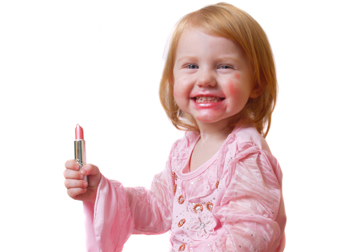Poison Kiss: Hundreds of Lipsticks Contaminated With Lead, Reports New FDA Study
Lipstick is a product used by millions of women of childbearing age who are unaware that they may be building up their blood lead levels each time they apply lipstick.
A new analysis of lead in lipstick conducted by the U.S. Food and Drug Administration reveals that the problem of lead in lipstick is worse and more widespread than previously reported. The recent study found lead in most of the 400 lipsticks tested by the agency, at widely varying levels of up to 7.19 parts per million (ppm) — more than twice the levels reported in a previous FDA study.
Food and Drug Administration agency found lead in most of the brands tested, and some of the most popular brands of lipstick contained lead levels far higher than previously reported. The most lead-contaminated lipstick in the study, Maybelline Color Sensation by L’Oreal USA, contained more than 10 times the highest amount of lead found in the Campaign for Safe Cosmetics lipstick study five years ago.
In a recent report, an advisory committee to the U.S. Centers for Disease Control and Prevention said there is no safe level of lead exposure for children and stressed the importance of preventing lead exposure for pregnant women.
“Lead is a proven neurotoxin that can cause learning, language and behavioral problems. Pregnant women are particularly vulnerable to lead exposure, because lead easily crosses the placenta and enters the fetal brain where it can interfere with normal development,” explained Sean Palfrey, M.D., a professor of pediatrics and public health at Boston University and the medical director of Boston’s Lead Poisoning Prevention Program.
“Lead builds up in the body over time and lead-containing lipstick applied several times a day, every day, can add up to
significant exposure levels,” said Mark Mitchell, M.D., MPH, policy advisor of the Connecticut Coalition for Environmental Justice and co-chair of the Environmental Health Task Force for the National Medical Association.
“How many millions of women have applied and reapplied lead-containing lipsticks since we first raised concerns about this problem five years ago? How many kids have played with their mom’s lipstick?” said Janet Nudelman, interim director of the Campaign for Safe Cosmetics and policy director at the Breast Cancer Fund. “It’s time for FDA to set a safety standard for lead in lipstick.”
Health advocates are urging FDA to set a maximum limit for lead in lipstick based on the lowest lead levels manufacturers can feasibly achieve.


